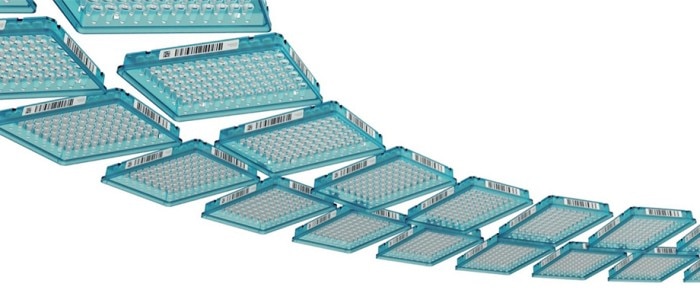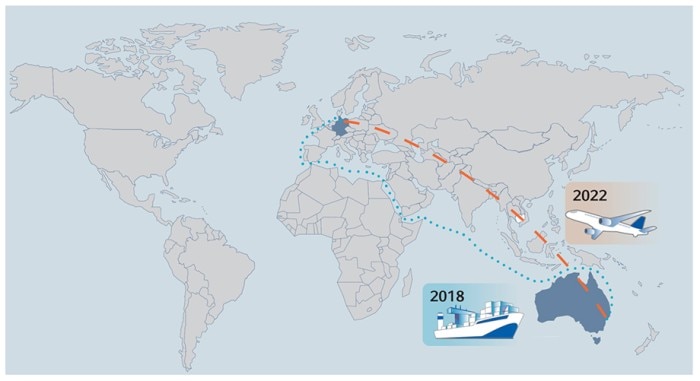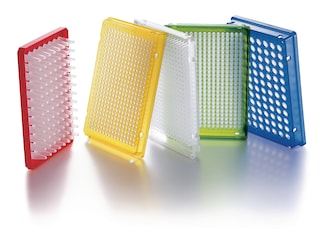MENU
SK | EUR
SK | EUR
No results found
Search Suggestions

Driving Reproducible NGS Results: Unlocking the Power of PCR Plates
Lab Academy
- Molecular Biology
- Lab Life
- Lab Routine
- Efficiency
- Next Generation Sequencing
- Amplification & PCR
- Reproducibility
- Automation
- Essay
From NGS library preparation to complex analysis systems, from cutting-edge research to precision medicine or clinical diagnostic - reproducibility over time and space is key. Uncover the hidden impact of lab consumables and learn how their quality and precision can significantly influence assay reproducibility and instill trust in your data!
The complexity and sensitivity of modern life science and diagnostic methods are constantly increasing. This requires that results are highly reproducible throughout several experimental replications often carried out in various laboratories and over longer periods of time. Among the numerous complex methods, Next Generation Sequencing (NGS) has matured and emerges as a driver for modern precision medicine, clinical diagnostics, and related research studies. With the advent of NGS, reproducibility of the library preparation, often including a PCR step, is essential. A frequently overlooked influence on the reproducibility, performance and quality of experimental results are laboratory consumables. Especially, PCR plates used in high-throughput workflows may have a dramatic impact in complex analysis systems.
What may influence the performance of a PCR plate?
Consumables, such as PCR tubes or PCR plates are an integral part of many upstream steps of NGS workflows. However, they may substantially vary in their quality and overall performance, which may negatively influence the qPCR assay reproducibility and thus the final NGS analysis result.
Apart from commonly known parameters such as biological purity, there are other less known characteristics, which may adversely influence good assay performance of a PCR plate:
High structural homogeneity, material purity, and a high-precision production process are crucial to ensure the highest reproducibility of the amplification results.
The parameters for reproducibility of a PCR plate
For reproducible performance of consumables, the following parameters must be met:
1. Intra-plate reproducibility: Reproducible conditions in each well of the same plate
2. Inter-plate/intra-lot reproducibility: Reproducible conditions in different plates of the same production lot
3. Inter-lot reproducibility: Reproducible conditions in different plates taken from lots produced over time
4. “Space and time reproducibility”: Reproducible conditions independent of environmental changes and time
Boost NGS Reproducibility with Eppendorf twin.tec® PCR Plates!
For scientists who transfer their established protocols to new lab facilities or expect their assays to perform reproducibly even years after initial development, high quality plates can contribute to their trust in their data’s reproducibility.
An optimal and highly reproducible performance was demonstrated using Eppendorf twin.tec® PCR 96 plates with a qPCR assay as a surrogate method for amplification-driven protocols such as NGS (or similar sensitive methods). The intra-plate, inter-plate, and inter-lot homogeneity was very high with a coefficient of variation of 0.40%. This performance is consistent, regardless of whether different wells of the same plate, different plates of the same production, or plates of different lots are compared. Even plates taken from a 4-year-old production lot transported to Australia and back to Germany offered the same consistent performance.
What may influence the performance of a PCR plate?
Consumables, such as PCR tubes or PCR plates are an integral part of many upstream steps of NGS workflows. However, they may substantially vary in their quality and overall performance, which may negatively influence the qPCR assay reproducibility and thus the final NGS analysis result. Apart from commonly known parameters such as biological purity, there are other less known characteristics, which may adversely influence good assay performance of a PCR plate:
- Leachables Chemicals released from the plastic into the samples can pose a source of error in various assay systems, including PCR, and can falsify results.
- Inhomogeneous wall thickness of tubes or plate wells leads to inconsistent temperature transfer. For fast and homogeneous temperature transfer, vessel walls should be as thin as possible.
- Surface structure or polymer material composition may lead to low reproducibility and efficiency of various assays/steps taking place in the plate. Low quality plates can get warped by the heating-cooling cycles. This impedes manual bead purification and hinders seamless automation workflows. Often, cheap PCR plates are made of only one material and bend like a horn. For optimal temperature transition, the shape of the vessel should fit the shape of the cycler block perfectly.
High structural homogeneity, material purity, and a high-precision production process are crucial to ensure the highest reproducibility of the amplification results.
The parameters for reproducibility of a PCR plate
For reproducible performance of consumables, the following parameters must be met:1. Intra-plate reproducibility: Reproducible conditions in each well of the same plate
2. Inter-plate/intra-lot reproducibility: Reproducible conditions in different plates of the same production lot
3. Inter-lot reproducibility: Reproducible conditions in different plates taken from lots produced over time
4. “Space and time reproducibility”: Reproducible conditions independent of environmental changes and time
Boost NGS Reproducibility with Eppendorf twin.tec® PCR Plates!
For scientists who transfer their established protocols to new lab facilities or expect their assays to perform reproducibly even years after initial development, high quality plates can contribute to their trust in their data’s reproducibility.An optimal and highly reproducible performance was demonstrated using Eppendorf twin.tec® PCR 96 plates with a qPCR assay as a surrogate method for amplification-driven protocols such as NGS (or similar sensitive methods). The intra-plate, inter-plate, and inter-lot homogeneity was very high with a coefficient of variation of 0.40%. This performance is consistent, regardless of whether different wells of the same plate, different plates of the same production, or plates of different lots are compared. Even plates taken from a 4-year-old production lot transported to Australia and back to Germany offered the same consistent performance.
Read more
Read less

Figure 1: The “world travel” of one of the lots of Eppendorf twin.tec® PCR plates analyzed in this application note. The lot was transported, stored and “experienced” diverse environmental conditions such as temperature fluctuations or variations in atmosphere pressure before coming back home.
What you need to know
- Lab consumables, such as PCR plates, can have a significant impact on assay reproducibility and the validity of data obtained.
- Understanding the potential sources of error, such as leachables, inhomogeneous wall thickness, and surface structure, is crucial for optimizing and validating each component of the workflow.
- Choosing high-quality PCR plates, such as Eppendorf twin.tec® PCR Plates, can greatly contribute to the reproducibility and reliability of experimental results in complex life science and diagnostic methods, providing scientists with increased confidence in the reproducibility of their data.
Read more
Read less
Related links
Read more
Read less

